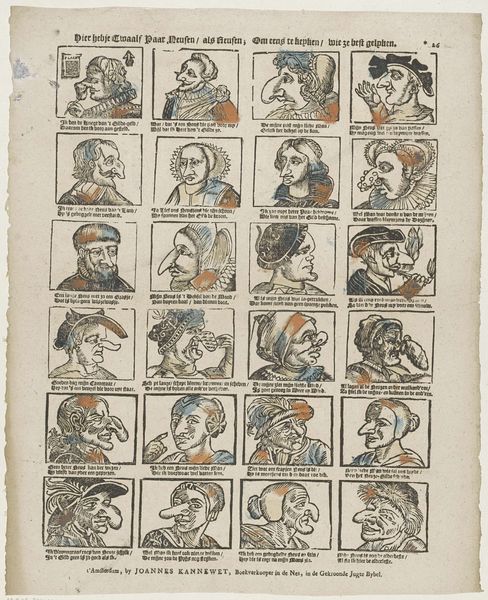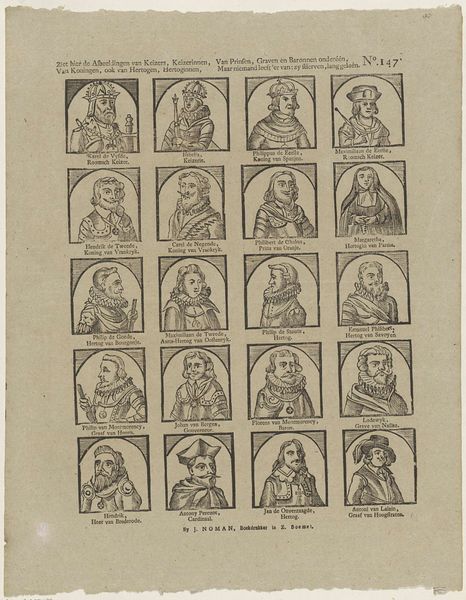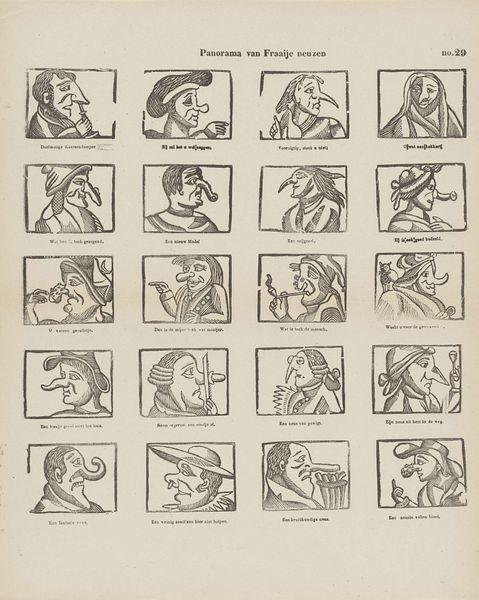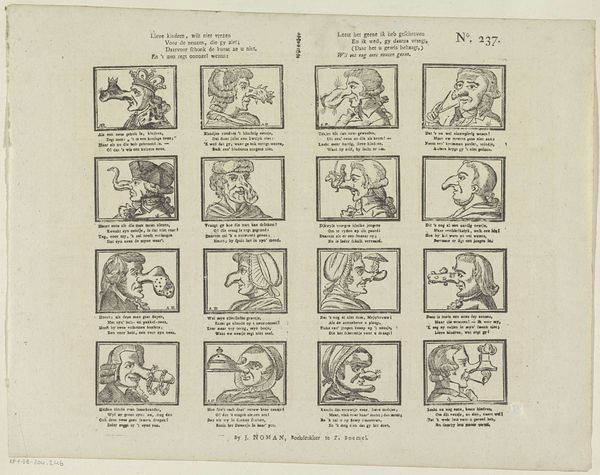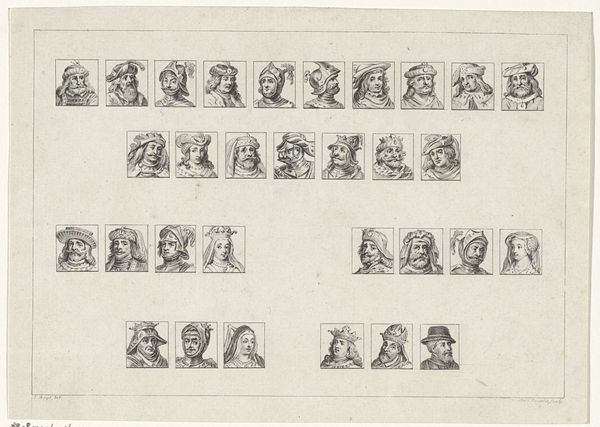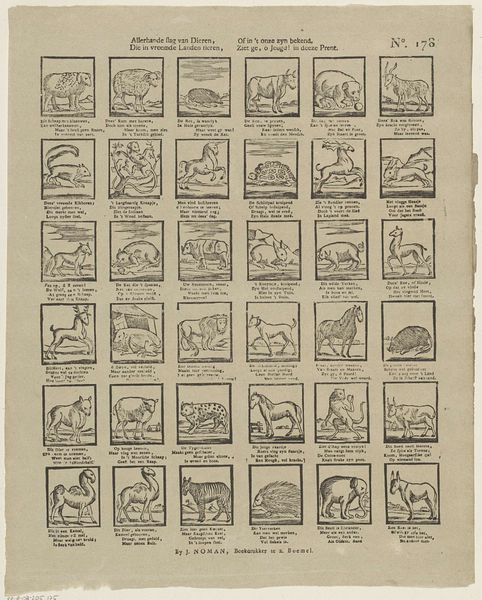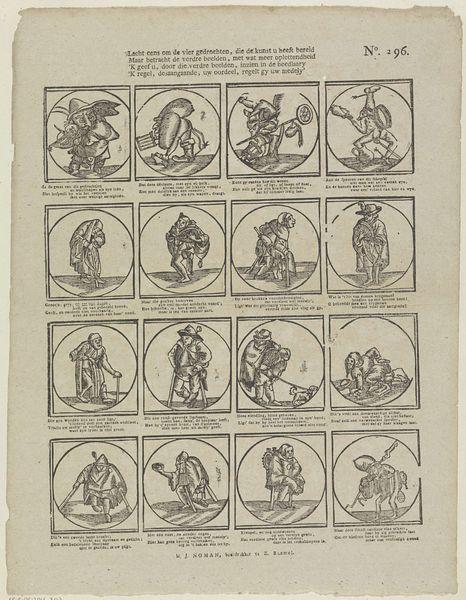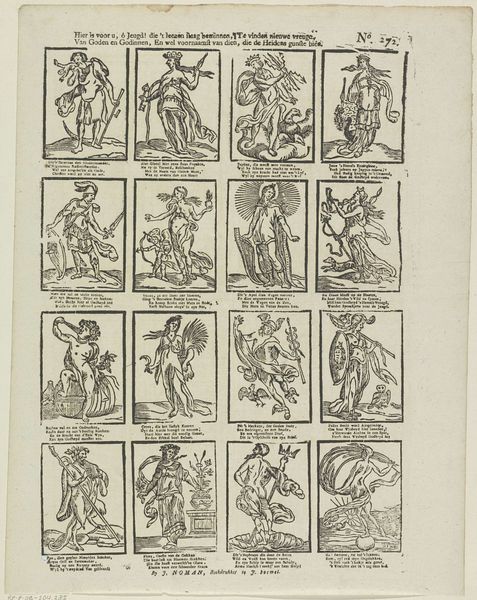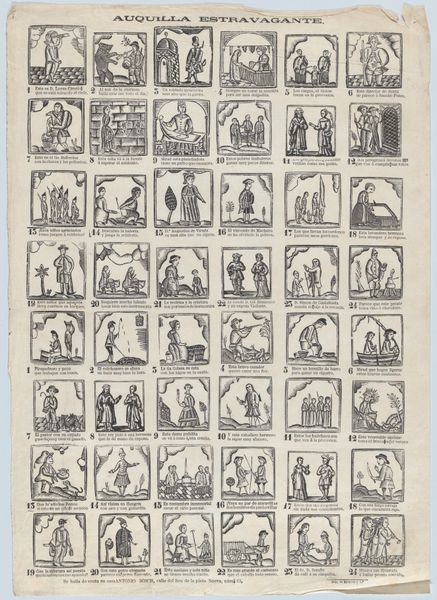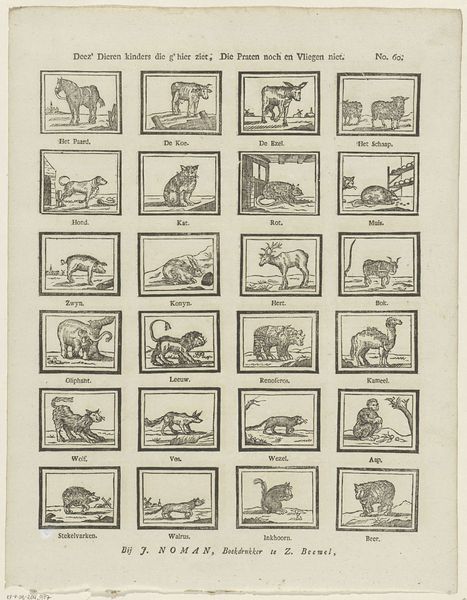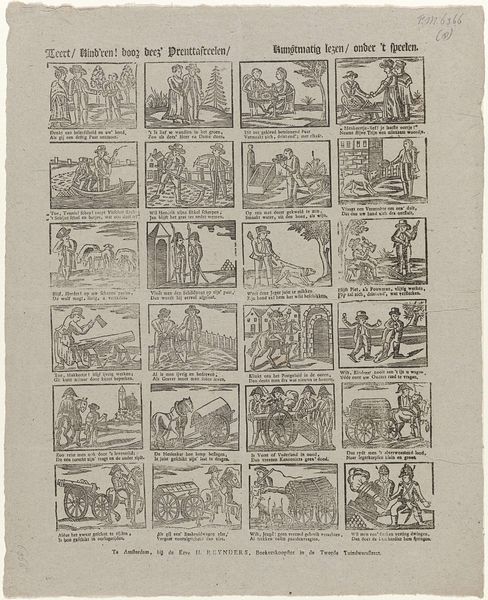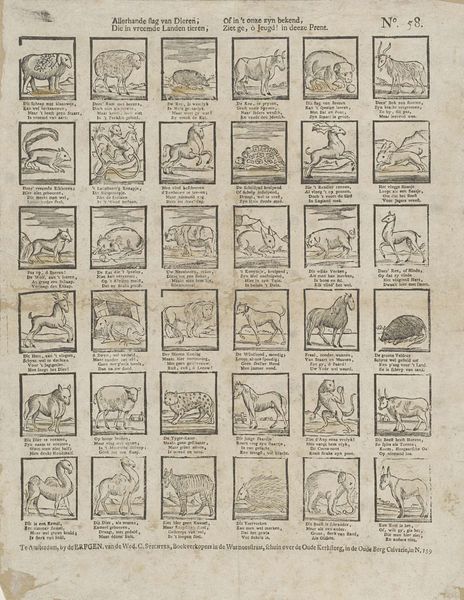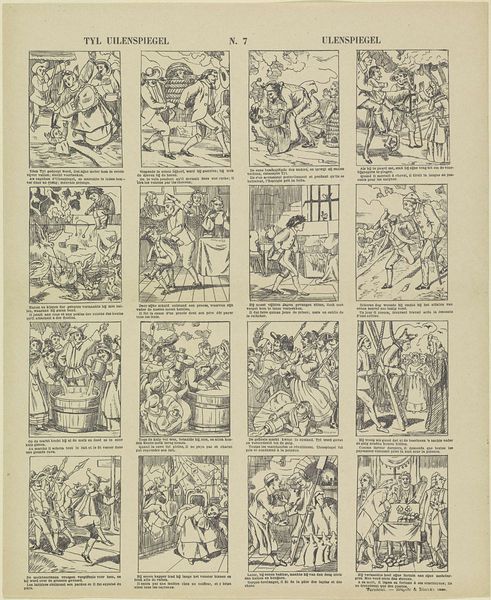
Kinders! wilt ge u vrolyk maaken / Met deez' raare neuzen-snaaken, / Zo beschouwt ze, en lacht dan vry / Om 't gestel, vol zotterny 1806 - 1830
0:00
0:00
print, engraving
# print
#
caricature
#
folk-art
#
genre-painting
#
engraving
Dimensions: height 405 mm, width 318 mm
Copyright: Rijks Museum: Open Domain
Curator: Let's discuss this rather curious engraving entitled "Kinders! wilt ge u vrolyk maaken / Met deez' raare neuzen-snaaken, / Zo beschouwt ze, en lacht dan vry / Om 't gestel, vol zotterny"—which roughly translates to "Children! if you want to make merry / With these strange nose-fellows, / So regard them, and laugh freely / At the character, full of folly." Created between 1806 and 1830, it resides here at the Rijksmuseum. Editor: Wow, my first thought is… it's so delightfully weird! Like a sheet of Victorian trading cards but for noses! Each tiny portrait is so distinct, almost aggressively unique. A little unnerving, but funny. Curator: The print provides an interesting window into early 19th-century Dutch folk art and its engagement with caricature. Note how class and gender are represented through these exaggerated features. These aren't just random noses; they're markers, signifiers of societal roles and perhaps, even critiques thereof. Editor: I like the way the artist, A. Robyn, uses the nose almost like a mask. They really distort these figures, taking liberties with human proportions. And the expressions—some seem proud, others wary. It makes you wonder what these characters would say if they could step out of their little boxes. Curator: Indeed. One might argue these depictions play into established physiognomic theories popular at the time, theories which falsely correlated facial features with inner character and social standing. It invites us to think about how humor can also be a form of social commentary, even, perhaps, reinforcing existing prejudices. Editor: Right, because you can see how these ‘humorous’ takes also echo the way satire can box people in, stereotyping based on how someone looks or acts. Makes you consider how seemingly innocent fun can be tied to wider power structures. Curator: Precisely. By examining pieces like this through the lens of cultural studies and art history, we unpack complex social attitudes. What do you take away? Editor: I think it’s made me more mindful of humor—and how much it's tied to how we view 'the other'. Like you say, how it reflects the unspoken power dynamics running beneath seemingly funny things. It also encourages one to be self aware of my own prejudices when making an artwork or judging one. Curator: Absolutely, it's an invitation to read between the lines.
Comments
No comments
Be the first to comment and join the conversation on the ultimate creative platform.
